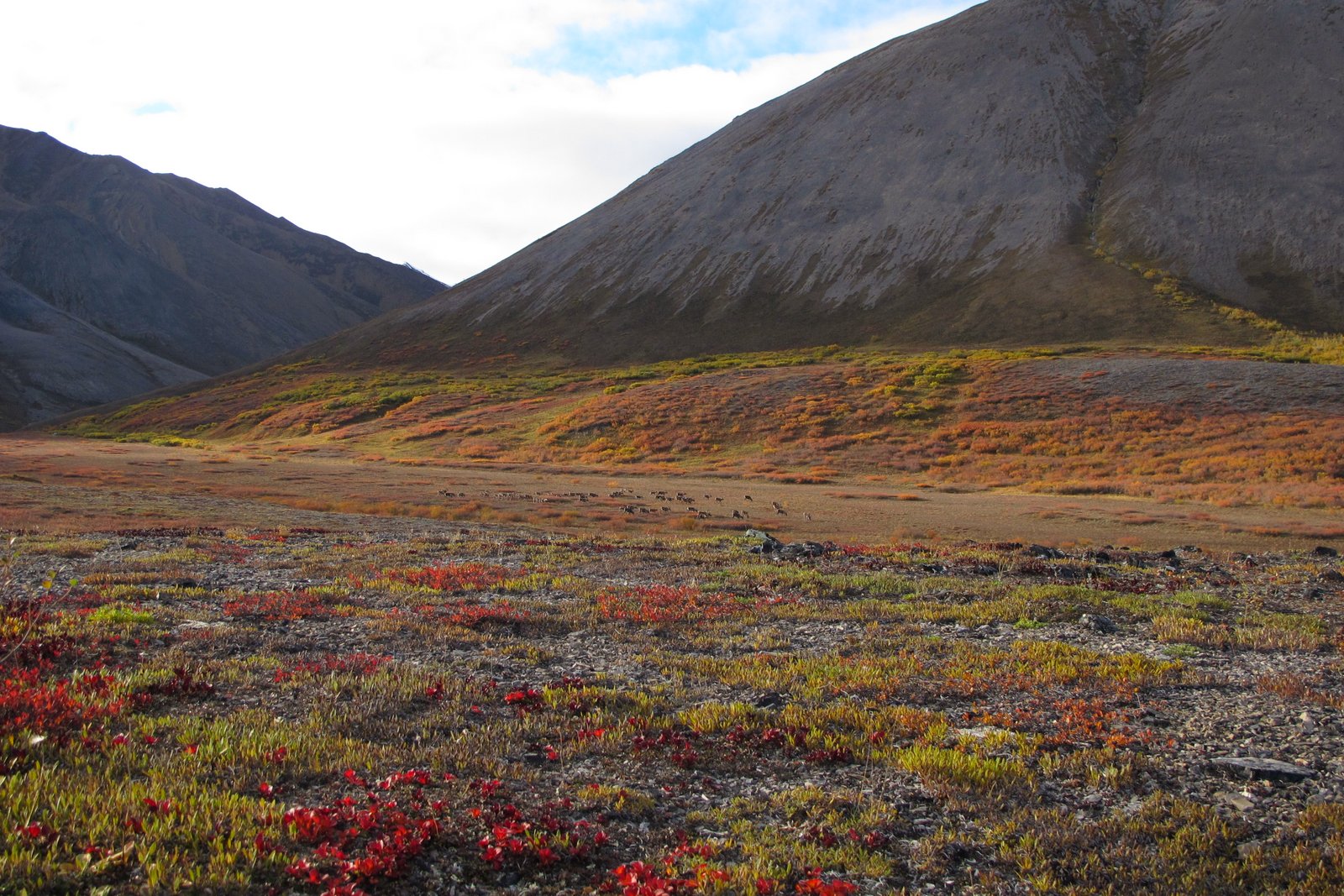Caribou make the world’s longest land migration — but face risks from Arctic development, a new study says
Animal migration is complicated.

Caribou and reindeer travel the longest distance while migrating on land, a new study shows. But they don’t move the most throughout the year; that distinction goes to gray wolves.
But all wide-ranging animals face dangers from human development, researchers say.
The study, published in Scientific Reports, sought to provide data for a long-held assertion, based on a study from 1989, that caribou travel the farthest distance. The researchers gathered data from GPS collars on terrestrial animals around the world, from caribou and wolves to camels and khulan (Mongolian wild ass).
They found that caribou migrate about 745 miles a year round-trip, clocking in at the longest terrestrial migration. (Whales and birds migrate much farther by sea and by air.)
But the researchers also found that for sheer distance traveled, gray wolves trek farther every year. One male wolf from Mongolia traveled 4,503 miles, the study found. Arctic foxes also outpaced caribou, traveling more than 3,600 miles.
These findings reveal that migration is a complicated concept.
In this study, the researchers define migration as a straight-line journey from one point to another and then back again. But actual animal movements are not so straightforward.
“The more you dig into it, the more complicated and messy it gets,” says Kyle Joly, lead author of this study and a wildlife biologist with the U.S. National Park Service.
“Migration is, you could say, a continuum,” he says.
Even caribou migration doesn’t happen as the crow flies. The Porcupine herd, for instance, meanders along the eastern edge of the Brooks Range before turning northward again. And while their migration only takes part of the year, caribou continue moving in other months.
The researchers also found that smaller animals tend to move more than larger animals. Part of that has to do with diet; when larger animals can eat a wider variety of food, they have to move less in search of nutrition. Larger animals also have greater body mass, so they are more resilient to dips in food availability.
One reason for the smaller animals’ total movements has to do with the predator-prey relationship.
“Predators are moving more than their prey,” Joly explains.
In Alaska, for instance, wolves circle caribou and moose — putting in more steps as they follow the other animals on migration routes and throughout the year.
Other reasons for movements include mating, marking and defending territory, and evading predators.
When caribou populations decline, they tend to migrate shorter distances and, sometimes, not at all. Once migratory patterns are lost, they aren’t often regained or relearned again.
Conversely, when caribou herds swell in size, they tend to move the longest distances, the researchers found.
One commonality shared by animals on the move: They are all endangered by human development, the researchers say.
“Long-distance terrestrial migrations are imperiled globally,” they write. Movements by large animals have been reduced by more than half in areas with high human activity.
Some of the dangers to migration include loss of habitat and the construction of fences, roads, and other types of infrastructure that act as barriers to migration.
“Caribou have been shown to cross a road or two or three,” Joly says. “But there are limits to the amount of infrastructure they’ll tolerate.”
Eliezer Gurarie, one of the study’s authors and a quantitative ecologist at the University of Maryland, points out that the large-scale animal movements that happen now occur in vast, undeveloped landscapes, like those found in the Arctic.
“All of these long-distance migrations occur in places that are relatively low-impacted by people,” he says. But increased development in the region, such as roads, mines and oil fields, threaten these migratory patterns.
“We’re working on having tools so we can have pretty concrete prediction of what would happen if we put this here,” Gurarie says, speaking of different proposed development projects.
Joly adds that the preservation of large, wild landscapes is very difficult, “because you have to do it every single time a development comes to the table.”
“And once you do it, it’s there,” he says. “There are very few cases of taking infrastructure out.”
Understanding migration and animal movement — and knowing which conservation areas and corridors in particular must be protected — would help conserve species on the move, the authors say.
“We have the chance to be proactive,” Joly says. “A way of mitigating things before the impacts arrive.”